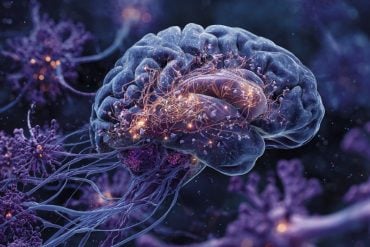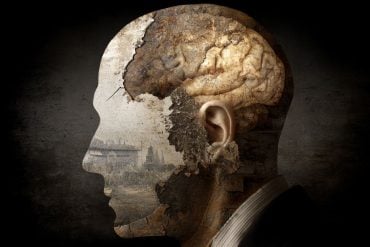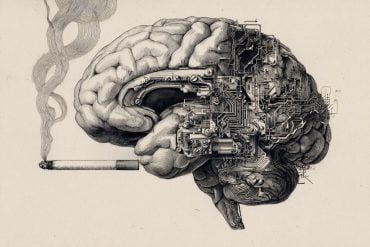Scientists from top institutions describe a groundbreaking discovery: the “missing law of nature”. This law reveals that evolution isn’t limited to living entities but extends to all complex natural systems, from atoms and stars to minerals.
This “Law of Increasing Functional Information” posits that if configurations of any system undergo selection for a particular function, evolution happens. Such a discovery reframes our understanding of the universe, from the origins of life to the properties of stars.
Key Facts:
- The new law recognizes evolution as a feature of all natural world’s complex systems, not just life.
- Systems, both living and nonliving, evolve when a configuration enhances function.
- This law complements existing laws, like the 2nd law of thermodynamics, by focusing on the increase of functional information in evolving systems.
Source: Carnegie Science Earth and Planets Laboratory
A paper in the prestigious Proceedings of the National Academy of Sciences today describes “a missing law of nature,” recognizing for the first time an important norm within the natural world’s workings.
In essence, the new law states that complex natural systems evolve to states of greater patterning, diversity, and complexity. In other words, evolution is not limited to life on Earth, it also occurs in other massively complex systems, from planets and stars to atoms, minerals, and more.
Authored by a nine-member team — leading scientists from the Carnegie Institution for Science, the California Institute of Technology (Caltech) and Cornell University, and philosophers from the University of Colorado — the work was funded by the John Templeton Foundation.
“Macroscopic” laws of nature describe and explain phenomena experienced daily in the natural world. Natural laws related to forces and motion, gravity, electromagnetism, and energy, for example, were described more than 150 years ago.
The new work presents a modern addition — a macroscopic law recognizing evolution as a common feature of the natural world’s complex systems, which are characterised as follows:
- They are formed from many different components, such as atoms, molecules, or cells, that can be arranged and rearranged repeatedly
- Are subject to natural processes that cause countless different arrangements to be formed
- Only a small fraction of all these configurations survive in a process called “selection for function.”
Regardless of whether the system is living or nonliving, when a novel configuration works well and function improves, evolution occurs.
The authors’ “Law of Increasing Functional Information” states that the system will evolve “if many different configurations of the system undergo selection for one or more functions.”
“An important component of this proposed natural law is the idea of ‘selection for function,’” says Carnegie astrobiologist Dr. Michael L. Wong, first author of the study.
In the case of biology, Darwin equated function primarily with survival—the ability to live long enough to produce fertile offspring.
The new study expands that perspective, noting that at least three kinds of function occur in nature.
The most basic function is stability – stable arrangements of atoms or molecules are selected to continue. Also chosen to persist are dynamic systems with ongoing supplies of energy.
The third and most interesting function is “novelty”—the tendency of evolving systems to explore new configurations that sometimes lead to startling new behaviors or characteristics.
Life’s evolutionary history is rich with novelties—photosynthesis evolved when single cells learned to harness light energy, multicellular life evolved when cells learned to cooperate, and species evolved thanks to advantageous new behaviors such as swimming, walking, flying, and thinking.
The same sort of evolution happens in the mineral kingdom. The earliest minerals represent particularly stable arrangements of atoms. Those primordial minerals provided foundations for the next generations of minerals, which participated in life’s origins. The evolution of life and minerals are intertwined, as life uses minerals for shells, teeth, and bones.
Indeed, Earth’s minerals, which began with about 20 at the dawn of our Solar System, now number almost 6,000 known today thanks to ever more complex physical, chemical, and ultimately biological processes over 4.5 billion years.
In the case of stars, the paper notes that just two major elements – hydrogen and helium – formed the first stars shortly after the big bang. Those earliest stars used hydrogen and helium to make about 20 heavier chemical elements. And the next generation of stars built on that diversity to produce almost 100 more elements.
“Charles Darwin eloquently articulated the way plants and animals evolve by natural selection, with many variations and traits of individuals and many different configurations,” says co-author Robert M. Hazen of Carnegie Science, a leader of the research.
“We contend that Darwinian theory is just a very special, very important case within a far larger natural phenomenon. The notion that selection for function drives evolution applies equally to stars, atoms, minerals, and many other conceptually equivalent situations where many configurations are subjected to selective pressure.”
The co-authors themselves represent a unique multi-disciplinary configuration: three philosophers of science, two astrobiologists, a data scientist, a mineralogist, and a theoretical physicist.
Says Dr. Wong: “In this new paper, we consider evolution in the broadest sense—change over time—which subsumes Darwinian evolution based upon the particulars of ‘descent with modification.’”
“The universe generates novel combinations of atoms, molecules, cells, etc. Those combinations that are stable and can go on to engender even more novelty will continue to evolve. This is what makes life the most striking example of evolution, but evolution is everywhere.”
Among many implications, the paper offers:
- Understanding into how differing systems possess varying degrees to which they can continue to evolve. “Potential complexity” or “future complexity” have been proposed as metrics of how much more complex an evolving system might become
- Insights into how the rate of evolution of some systems can be influenced artificially. The notion of functional information suggests that the rate of evolution in a system might be increased in at least three ways: (1) by increasing the number and/or diversity of interacting agents, (2) by increasing the number of different configurations of the system; and/or 3) by enhancing the selective pressure on the system (for example, in chemical systems by more frequent cycles of heating/cooling or wetting/drying).
- A deeper understanding of generative forces behind the creation and existence of complex phenomena in the universe, and the role of information in describing them
- An understanding of life in the context of other complex evolving systems. Life shares certain conceptual equivalencies with other complex evolving systems, but the authors point to a future research direction, asking if there is something distinct about how life processes information on functionality (see also https://royalsocietypublishing.org/doi/10.1098/rsif.2022.0810).
- Aiding the search for life elsewhere: if there is a demarcation between life and non-life that has to do with selection for function, can we identify the “rules of life” that allow us to discriminate that biotic dividing line in astrobiological investigations? (See also https://conta.cc/3LwLRYS, “Did Life Exist on Mars? Other Planets? With AI’s Help, We May Know Soon”)
- At a time when evolving AI systems are an increasing concern, a predictive law of information that characterizes how both natural and symbolic systems evolve is especially welcome
Laws of nature – motion, gravity, electromagnetism, thermodynamics – etc. codify the general behavior of various macroscopic natural systems across space and time.
The “law of increasing functional information” published today complements the 2nd law of thermodynamics, which states that the entropy (disorder) of an isolated system increases over time (and heat always flows from hotter to colder objects).
About this evolutionary neuroscience research news
Author: Natasha Metzler
Source: Carnegie Science
Contact: Natasha Metzler – Carnegie Science
Image: The image is credited to Neuroscience News
Original Research: Open access.
“On the roles of function and selection in evolving systems” by Michael Wong et al. PNAS
Abstract
On the roles of function and selection in evolving systems
Physical laws—such as the laws of motion, gravity, electromagnetism, and thermodynamics—codify the general behavior of varied macroscopic natural systems across space and time. We propose that an additional, hitherto-unarticulated law is required to characterize familiar macroscopic phenomena of our complex, evolving universe.
An important feature of the classical laws of physics is the conceptual equivalence of specific characteristics shared by an extensive, seemingly diverse body of natural phenomena. Identifying potential equivalencies among disparate phenomena—for example, falling apples and orbiting moons or hot objects and compressed springs—has been instrumental in advancing the scientific understanding of our world through the articulation of laws of nature.
A pervasive wonder of the natural world is the evolution of varied systems, including stars, minerals, atmospheres, and life. These evolving systems appear to be conceptually equivalent in that they display three notable attributes: 1) They form from numerous components that have the potential to adopt combinatorially vast numbers of different configurations; 2) processes exist that generate numerous different configurations; and 3) configurations are preferentially selected based on function.
We identify universal concepts of selection—static persistence, dynamic persistence, and novelty generation—that underpin function and drive systems to evolve through the exchange of information between the environment and the system.
Accordingly, we propose a “law of increasing functional information”: The functional information of a system will increase (i.e., the system will evolve) if many different configurations of the system undergo selection for one or more functions.








